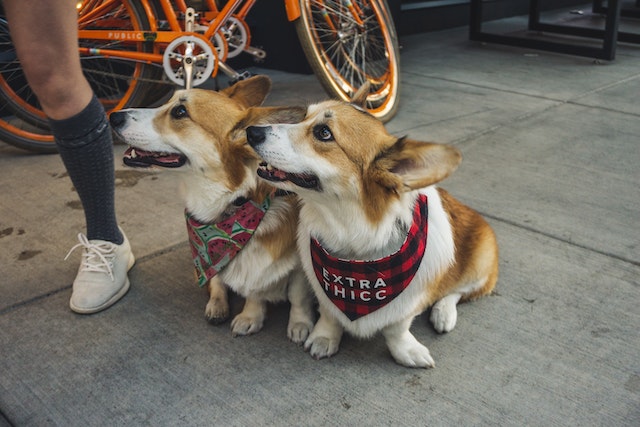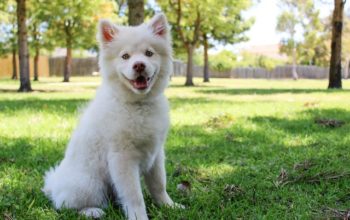Proper nutrition is the cornerstone of your dog’s health and well-being. Just like humans, dogs require a balanced diet to thrive. As a responsible pet owner, it’s your duty to ensure that your furry companion receives the nutrients they need for optimal health and vitality. In this comprehensive guide, we will explore the key aspects of designing a healthy diet for your dog, from choosing the right ingredients to portion control and special dietary considerations. By the end, you’ll have a thorough understanding of how to nourish your beloved canine friend for a long and happy life.
The Fundamentals of Dog Nutrition
Before we delve into specific dietary recommendations, let’s understand the fundamental components of a dog’s diet:
1. Protein
Proteins are the building blocks of your dog’s body. They are crucial for muscle development, tissue repair, and overall growth. High-quality animal-based proteins, such as chicken, beef, and fish, should form the foundation of your dog’s diet. These proteins provide essential amino acids that are vital for your dog’s health.
2. Carbohydrates
Carbohydrates provide energy for your dog’s daily activities. Common sources of carbohydrates include grains like rice and oats, as well as vegetables like sweet potatoes and peas. These should be included in moderation to ensure your dog gets the necessary energy without excessive calories.
3. Fats
Healthy fats are essential for maintaining your dog’s skin, coat, and overall health. Sources of good fats include fish oil, flaxseed, and the fat content in meat. While fats are essential, avoid excessive fat intake, as it can lead to obesity, which can contribute to various health issues.
4. Vitamins and Minerals
Your dog needs a variety of vitamins and minerals for proper metabolic function. A well-balanced diet that includes a range of ingredients usually covers these nutritional needs. However, some dogs may require supplements, which should be discussed with your veterinarian.
5. Water
Fresh, clean water is perhaps the most critical nutrient. Ensure your dog has access to water at all times to prevent dehydration, especially in hot weather or after physical activity.
Designing Your Dog’s Diet
Now, let’s look at the practical steps to design a healthy diet for your dog:
1. Consult with a Veterinarian
Before making any significant dietary changes, consult with your veterinarian. They can assess your dog’s specific needs based on factors like age, breed, activity level, and any existing health issues. A veterinarian can help you determine the best diet for your dog’s individual requirements.
2. Choose High-Quality Commercial Dog Food
Commercial dog food is formulated to meet the nutritional needs of dogs. Look for reputable brands that use real meat as the primary ingredient and avoid products with excessive fillers or artificial additives. Quality dog food is typically labeled as “complete and balanced” according to the Association of American Feed Control Officials (AAFCO) standards.
3. Read the Label
When selecting commercial dog food, review the nutritional information on the label. Ensure it meets the AAFCO standards for your dog’s life stage (puppy, adult, or senior). The label should also list the specific ingredients, and ideally, meat should be listed as the first ingredient.

4. Portion Control
Follow the feeding guidelines provided on the dog food packaging. Adjust portions based on your dog’s age, weight, and activity level. Overfeeding can lead to obesity, while underfeeding can result in nutritional deficiencies. Regularly monitor your dog’s weight and adjust portions accordingly.
5. Consider Special Dietary Needs
Some dogs have unique dietary requirements due to allergies, sensitivities, or medical conditions. In such cases, your veterinarian may recommend a specialized diet, such as grain-free or hypoallergenic food. These diets are formulated to address specific health concerns while still providing essential nutrients.
6. Avoid Harmful Foods
Certain foods are toxic to dogs and should be avoided at all costs. These include chocolate, grapes, raisins, onions, garlic, and foods containing xylitol. Educate yourself on these hazards to keep your dog safe. If you suspect your dog has ingested a toxic substance, contact your veterinarian or an emergency animal poison control hotline immediately.
7. Monitor Your Dog’s Weight
Regularly assess your dog’s weight and body condition. If you notice significant weight gain or loss, consult your vet for adjustments to their diet. Maintaining a healthy weight is essential for your dog’s overall well-being.
8. Treats and Snacks
Treats and snacks should be used in moderation. Opt for healthy options like carrot sticks, blueberries, or specially formulated dog treats designed for training. Many commercial dog treats are high in calories, so be mindful of portion sizes.
Homemade Dog Food
Some pet owners choose to prepare homemade dog food. If you decide to go this route, keep these guidelines in mind:
1. Balance is Key
Ensure that your homemade meals provide a balanced diet. Consult with a veterinary nutritionist to create recipes that meet your dog’s nutritional needs. Homemade diets can be beneficial but can also be challenging to balance correctly.
2. Cooked Meat
Always cook meat thoroughly to kill any harmful bacteria. Raw meat diets can pose health risks to both dogs and humans. Cooking also makes it more digestible for your dog.
3. No Seasonings
Avoid using seasonings, spices, or additives that could be harmful to your dog. Stick to simple, unseasoned ingredients.
4. Variety of Ingredients
Incorporate a variety of ingredients into your dog’s homemade meals to provide a range of nutrients. Including lean meats, vegetables, and grains can help achieve this balance.
5. Supplements
Homemade diets may require supplements to ensure your dog receives all essential vitamins and minerals. Work with a veterinary nutritionist to determine the necessary supplements. Homemade diets should be carefully planned to meet your dog’s specific needs.
Conclusion
Designing a healthy diet for your dog is a crucial aspect of responsible pet ownership. A well-balanced diet plays a significant role in your dog’s overall health, energy levels, and longevity. Remember that your veterinarian is your best source of guidance for your dog’s specific dietary needs. By providing your furry friend with the right nutrition, you’re ensuring that they lead a happy and healthy life by your side.

